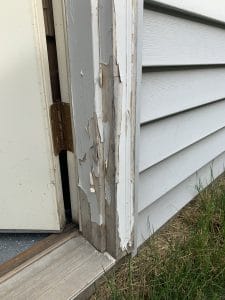Lennox Pulse furnaces
In the early 1980s, furnace manufacturers were beginning to design more energy efficient furnaces, units that could extract over 90% of heat energy from combustion of propane or natural gas. A high efficiency furnace uses two heat exchangers and can be identified by its use of low-temp PVC for the exhaust, the use of an inducer fan and the presence of a condensation line to dispose of acidic condensate produced in the process of extracting heat from the combusted gasses. As a system, the high efficiency forced air furnace is easily the most prevalent in our cold climate.

Lennox was at the forefront of the new technology, and in 1982 introduced a product that was ahead of its time: the Lennox Pulse high efficiency furnace. These units are known for their distinctive “pulsating” sound produced when running, which sounds somewhat like a small internal combustion engine when heard from the exhaust termination on the outside of the house. The Pulse used a very unique design, with a cast iron combustion chamber complete with a spark plug, a resonator and expansion chamber, and finally a heat exchanger. The design created positive pressure inside the heat exchanger, whereas the high efficiency furnace designs of today use an inducer fan to “pull” combusted gasses through a primary and secondary heat exchanger. Although Lennox built the Pulse models with heavy duty materials, they noticed a high rate of reported heat exchanger failures. As a result, Pulse furnaces produced between 1982 and 1989 were subject to recalls for cracked heat exchangers introducing carbon monoxide to the indoor air. Lennox was very proactive in addressing the problem, and most of the affected units have been serviced or replaced as part of the recall.
Lennox continued to produce a variant of the Pulse design into the 1990s, branded the Pulse 21. These units were not subject to the recall of earlier models. Although the Pulse 21 was not recalled, it used a very similar design, and it’s a good idea to have a pressure test performed on the heat exchanger every few years by a qualified Lennox technician. If you are purchasing a home equipped with a Pulse or Pulse 21, it is a good idea to schedule a pressure test prior to closing, or even before the inspection contingency is removed if negotiations allow. If you have one of these units and are not sure if it is an earlier or later model, you can tell by looking at the data card located on the inside wall of the furnace. If the model number includes G14 or GSR14, it is recalled and you should contact your local Lennox dealer right away to make sure the recall service has been performed.



